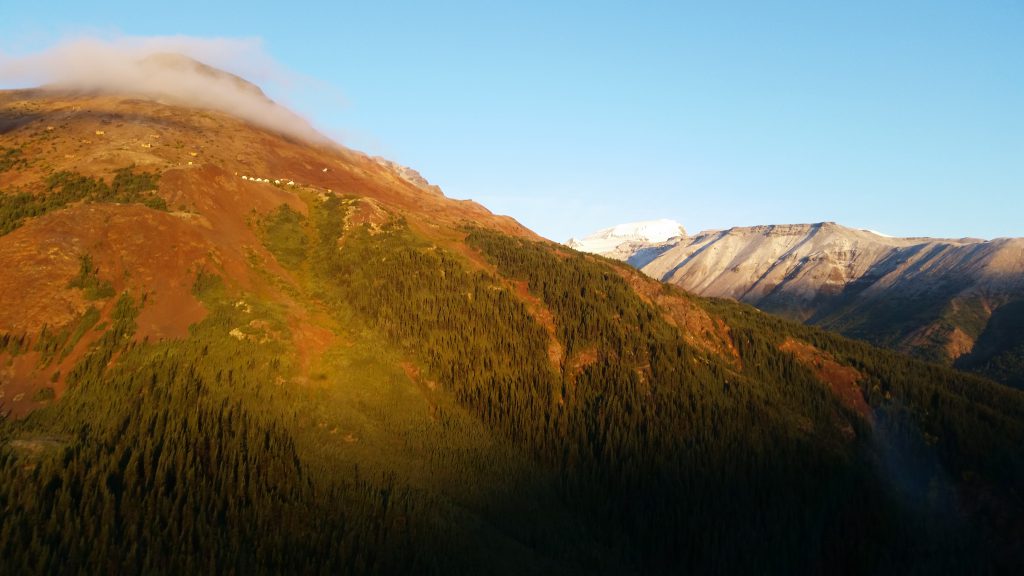
Canadian junior explorer Skeena Resources (TSX: SKE) grabbed headlines this week when it announced the company is returning the mineral tenures for their Spectrum claim near Mount Edziza Provincial Park to establish a new 3,500 hectare conservancy in the Tahltan territory in British Columbia’s Golden Triangle.
The news followed the announcement that the Tahltan Nation made a $3.9 million investment in Skeena’s Eskay Creek gold-silver project.
Eskay Creek is a past-producing mine first discovered in 1988 that Skeena initially optioned from Barrick Gold in 2017, before acquiring 100% ownership in October of last year.
The former Eskay Creek mine was once the highest-grade gold mine in the world when it was in production, according to Skeena, as well as being the fifth-largest silver operation by volume. It produced 3.3 million oz. of gold and 160 million oz. of silver at average grades of 45 grams gold per tonne and 2,224 grams silver per tonne between 1994 and 2008.
An updated resource estimate for Eskay Creek was released last week.
Walter Coles, Skeena Resources CEO said the company reported 5 million ounces gold equivalent in the Indicated category – up significantly from its last resource.
“We are continuing exploration this summer, and we expect to be able to make the project bigger,” Coles said.
Coles also said the company was honoured that the Tahltan Nation invested in Skeena.
“The decision was not easy, as we have shareholders who want to see us advance those claims, but it all comes back to our core values of shared prosperity, natural resource development while also placing importance on environmental stewardship”
Walter Coles, CEO, Skeena Resources
“I think it is a natural evolution of our very close relationship that has developed over a number of years,” Coles told MINING.com.
“Our goal is to have resource development combined with environmental stewardship. The return of the Spectrum mineral claims fits with the core values of Skeena as a company.”
“It was a lot of work, a lot of collaboration,” Coles said. “This was a land package that we explored on, spent money on, and it was after we started consulting with the Tahltan that we came to understand the cultural significance of the area, and through those ongoing dialogues, we realized that the right thing to do was to change it into a nature conservancy.
The Tahltan Central Government (TCG), the Province of British Columbia, Skeena Resources, the Nature Conservancy of Canada, and BC Parks Foundation worked in partnership to create the conservancy.
“The decision was not easy, as we have shareholders who want to see us advance those claims, but it all comes back to our core values of shared prosperity, natural resource development while also placing importance on environmental stewardship,” Coles said, adding the company hopes to partner with Tahltan on other opportunities that exist in their territory.
“We have been working in Tahltan Territory for a long time, so we take a big picture view,” Coles said.
Tahltan Central Government (TGC) president Chad Norman Day said buying into mining projects on Tahltan territory is a strategy the Nation has been pursuing for years.
The Tahltan Central Government is the political arm of the Tahltan nation, separate from the councils governing the Tahltan First Nation, which also has reserves in Telegraph Creek and Dease Lake. TCG speaks for Tahltan people on issues involving the approximately 94,000 square kilometres of traditional Tahltan territory, which includes the headwaters of the Stikine, Nass and Skeena rivers, Interior News reported.
Tahltan’s minerals–rich territory is also home to Imperial Metals’ Red Chris copper and gold mine. Day, during a three-term service, was instrumental in negotiating the agreement over Red Chris.

“We are the type of nation that is growing, evolving and I think that the next step in co-managing our territory and our wealth — having control of the territory — the next level is starting to own a portion of the companies in these major projects,” Day told MINING.com.
The Tahltan purchased a portion of Northwest British Columbia Hydro Electric Facilities for more than $124 million from Axium Infrastructure Canada and Manulife Financial Corporation in 2019.
The same year Tahltan signed an Impact Benefit Agreement (IBA) with Seabridge to protect Indigenous rights and negotiate shared economic benefits for the KSM project, and in January this year established an IBA with Coeur Silvertip for the Silvertip silver-zinc lead mine.
Day said in regards to the Eskay Creek project, TCG will need to go through an internal process to officially get the approval and consent of the Tahltan people.
“The Tahltan Central Government, and Tahltan Nation (are) very proud of our internal engagement and ratification processes because ultimately the decision for these projects to go through actually does not lie with the politicians, it lies with our members,” Day said. “They went through the ratification process for the Gore Creek IBA, the hydroelectric project IBA, and the Seabridge IBA and we would expect the same process to be followed for a future IBA with Skeena Resources on Eskay.”
“If it goes through, in the future those benefits will be significantly higher, given the evolution of recognition in this province and this country, with Indigenous people and their rights”
Chad Norman Day, President, Tahltan Central Governemnt
“The company has been first class — very progressive. The company has positioned itself to work beside the Tahltan Nation for years to come,” Day said.
Day noted that any mining project proposed on Tahltan territory presents the opportunity for an equity stake.
In regards to Eskay Creek, “we bought in for C$5 million, but I would venture that our Impact Benefit agreement would have [a] further equity stake in it,” Day said. “We’ll be going through this environmental mitigation work hand in hand.”
Anytime there is a mining project in British Columbia the Indigenous people, in this case the Tahltan, get 37.5% of the tax revenue, which was not the case during the time Eskay Creek was last in production, Day said.
“That money would flow to our nation for all kinds of empowering initiatives, infrastructure, education – so there’s really a whole plethora of benefits that come when these projects are established,” Day said.
“If it goes through, in the future those benefits will be significantly higher, given the evolution of recognition in this province and this country, with Indigenous people and their rights.”